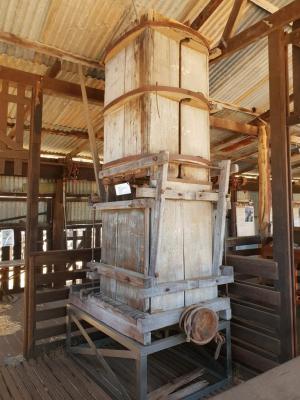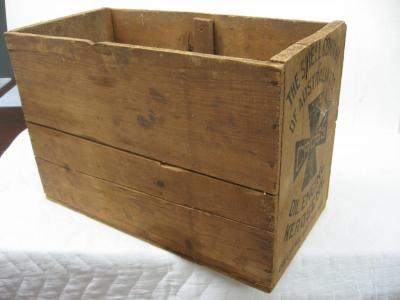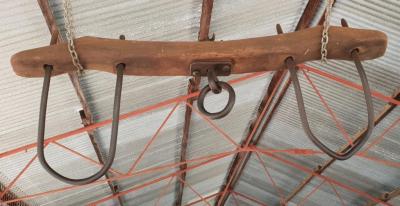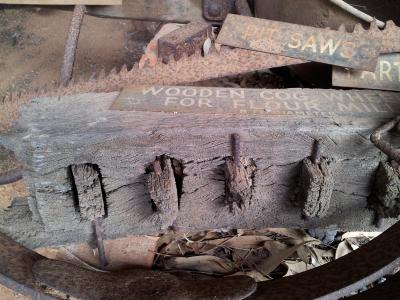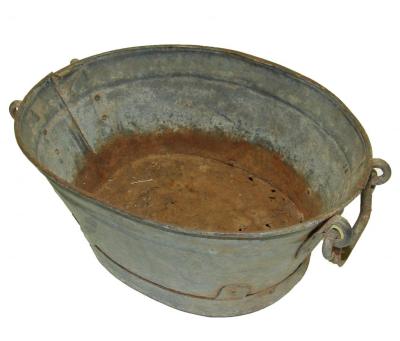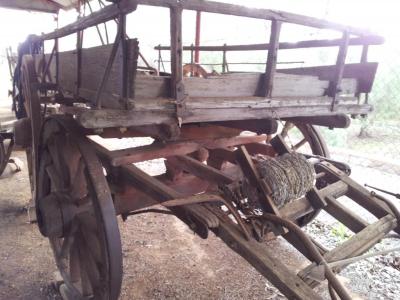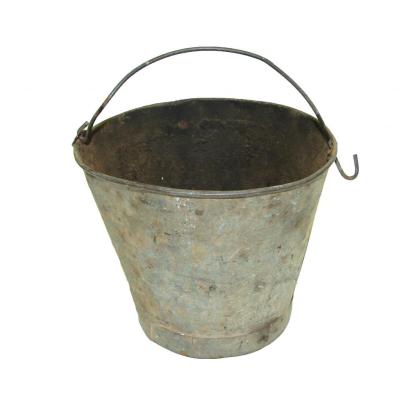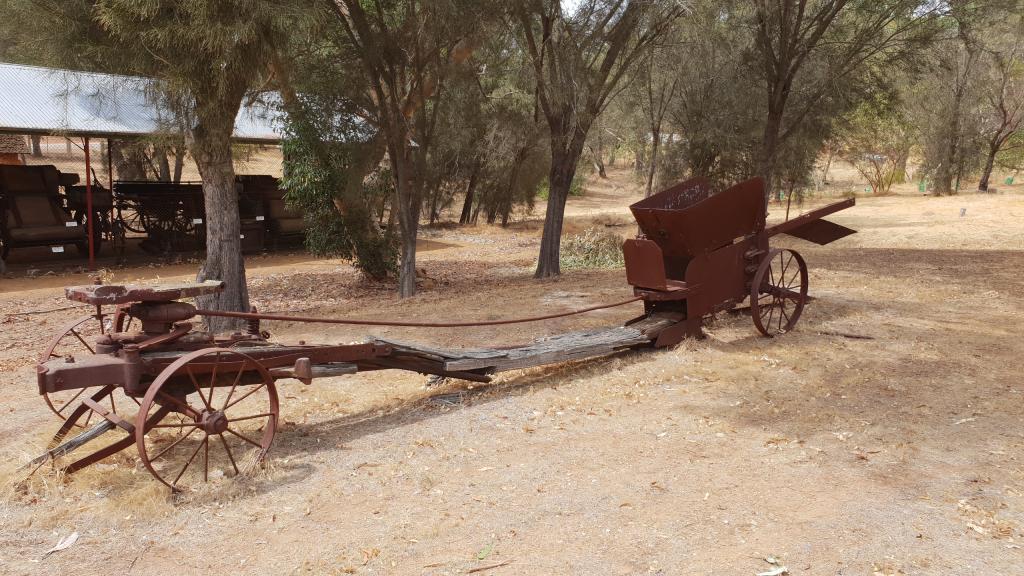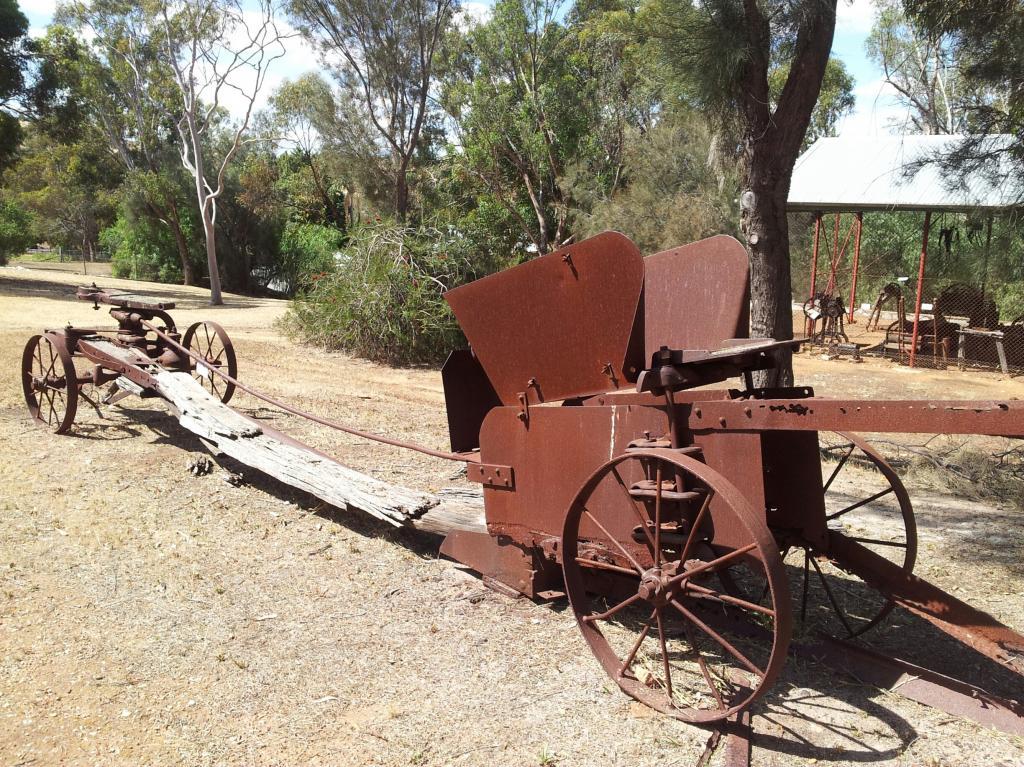BALER; HAY PRESS
1893Horse operated hay baler, believed to be a Kansas City Hay Press - patented 1893.
Not in working order, metal corroded.
Original metal pole at front used for towing.
Wooden shaft moves side-ways during operation, pushing rather than pulling.
There is an original section of wood (Oregon timber) and a second section of local Avon Valley timber (York gum) added presumably as a replacement for broken original.
Wheels are same design as rest of machine which indicates it is complete - wheels have American casting numbers. Cup-head bolts, early era square nuts indicate pre-1900 manufacture.
There are a couple of different provenances recorded for this object. The following appears most likely at this stage: -
Donated by Bill Hodgkinson. Hodgkinsons owned Mayvale, a farm between Picnic Hill and Coondle, and bought what is believed to be the first hay baler in the Toodyay district.
Two horses walked in circles to turn the cogs that drove the baler. Holes were dug to lower the wheels so that the horses could step over the beam shaft when it was in operation. As the straw was packed tight, a wire band had to be tied by hand before the bales were ejected. Bushes were thrown over the top of a frame attached to the baler so the workers had some shade from the summer sun. A six-man team was required, four baling and stacking and two carting straw in from the paddock in the old truck. The team at Mayvale in 1934 was Bert Chitty, Phil Cook, Reg Ferguson, Jim Quake, Henry Strahan and the boss.
Baling hay or clover helped to preserve fodder from the rabbit plague. After harvest, Hodgkinson baled straw and sent it from the Coondle siding to Perth where it was used on the floor of racing stables.
(Historical information sourced from Wally Chitty’s book Toodyay, the Gold Old Days p 86.)
Details
Details
'For the bigger business of supplying the hay market a hay press was used. It was drawn into the field of mown hay or where the sheaves were in stooks. Holes were dug to lower the wheels so that the horse could step over the beam shaft as he worked. Five [or six] men were needed in the team as well. Two men were in the field ranking and loading the hay on to a wagon. The hay was then piled by the baler where it was fed by another man with a fork into the machine. Another man stood over with a plunger to push the hay into the press and yet another man wired the pressed bale in three places before it was spring released. He had time also to stack the bales which were usually carted away immediately and trucked to market.' (from Newcastle Gaol museum records)
At this stage it is believed to be a Kansas City Hay Press patented 1893.
Unknown how it came to WA, although there was a lot of trade between WA (as well as SA, Vic and UK) and America at this time.
